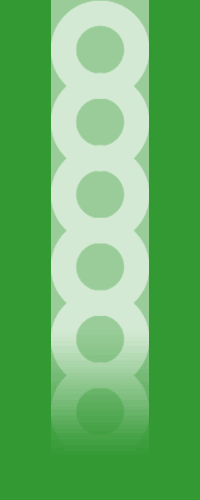The first step in the Calvin cycle is that CO2 enters the stroma from the cytosol. An enzyme then combines the CO2
molecule with a 5-carbon molecule called ribulose biphosphate or RuBP. The resulting 6-carbon molecules are unstable so they
soon split into two stabler 3-carbon molecules. These new molecules are known as 3-phosphoglycerate or 3-PGA.
In the second step, each molecule of 3-PGA is then converted into a different 3-carbon molecule called glyceralddehyde
3-phosphate (G3P) in a two part process. First, each 3-PGA molecule gains a phosphate group from a molecule of ATP. The resulting
compound then recieves a proton from NADPH which then gives off phosphate group, making G3O. The ADP, NADP+, and the
phosphate group that are also made can be used again in the light reactions to make more ATP and NADPH.
In the third step, one of thr G3P molecules exit the Clavin cycle and is used to make carbohydrates where energy is stored
for later use. Finally in the fourth step, the rest of the G3P molecules are made back into RuBP through the addition of phosphate
groups from ATP molecules. The results are RuBP molecules which enter the Calvin cycle to go through the process again.
Alternate Pathways
Certain plants use alternate pathways to transport carbon dioxide. These plants are usually found in hot and dry conditions
where water is in low supply. One alternate pathway helps plants fix CO2 into 4-carbon compounds. This pathway is known
as C4 plants. During the hottest peak in the day, C4 plants have their stromata partly closed. Certain cells in C4 plants
have an enzyne that can fix CO2 into 4-carbon compounds even when CO2 is low and O2 is high. These compounds then transport
to other cells where CO2 is released and enters the Calvin cycle. These unnique C4 plants include corn, sugar cane and crab
grass. These types of plants only lose half as much water as C3 plants when producing the same amount of carbohydrates.
